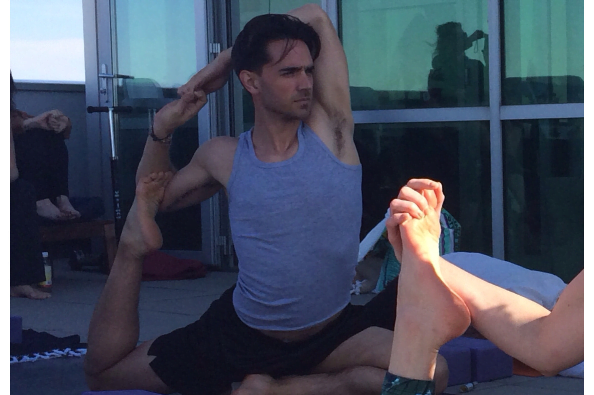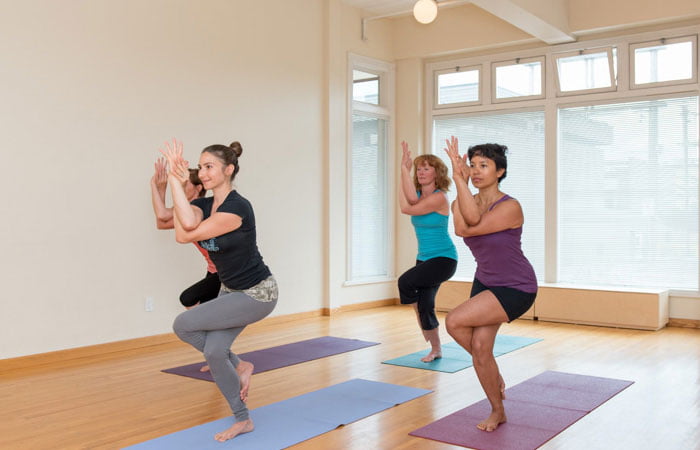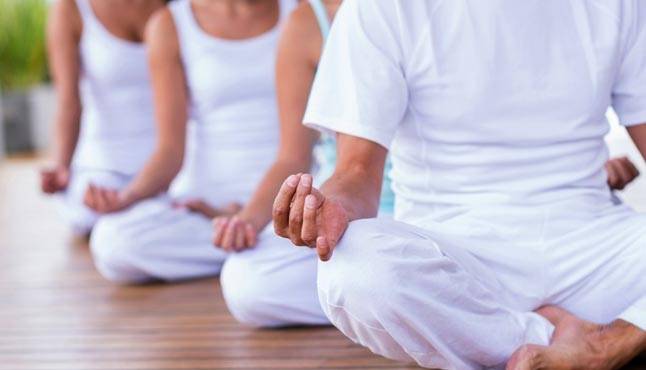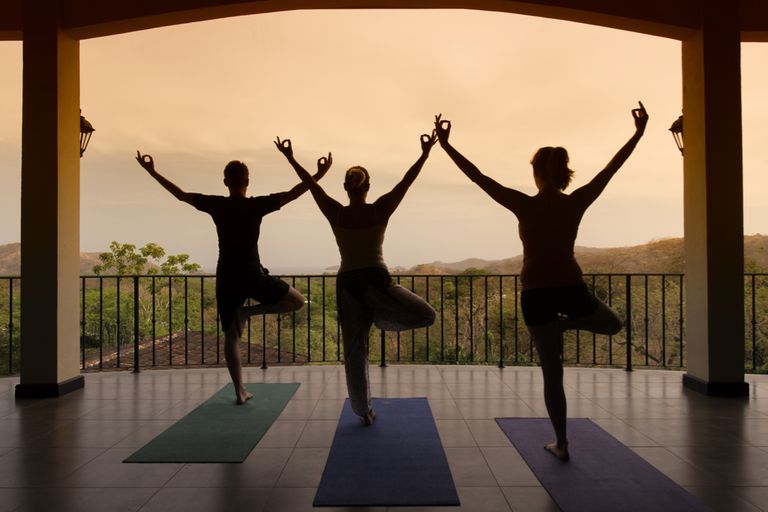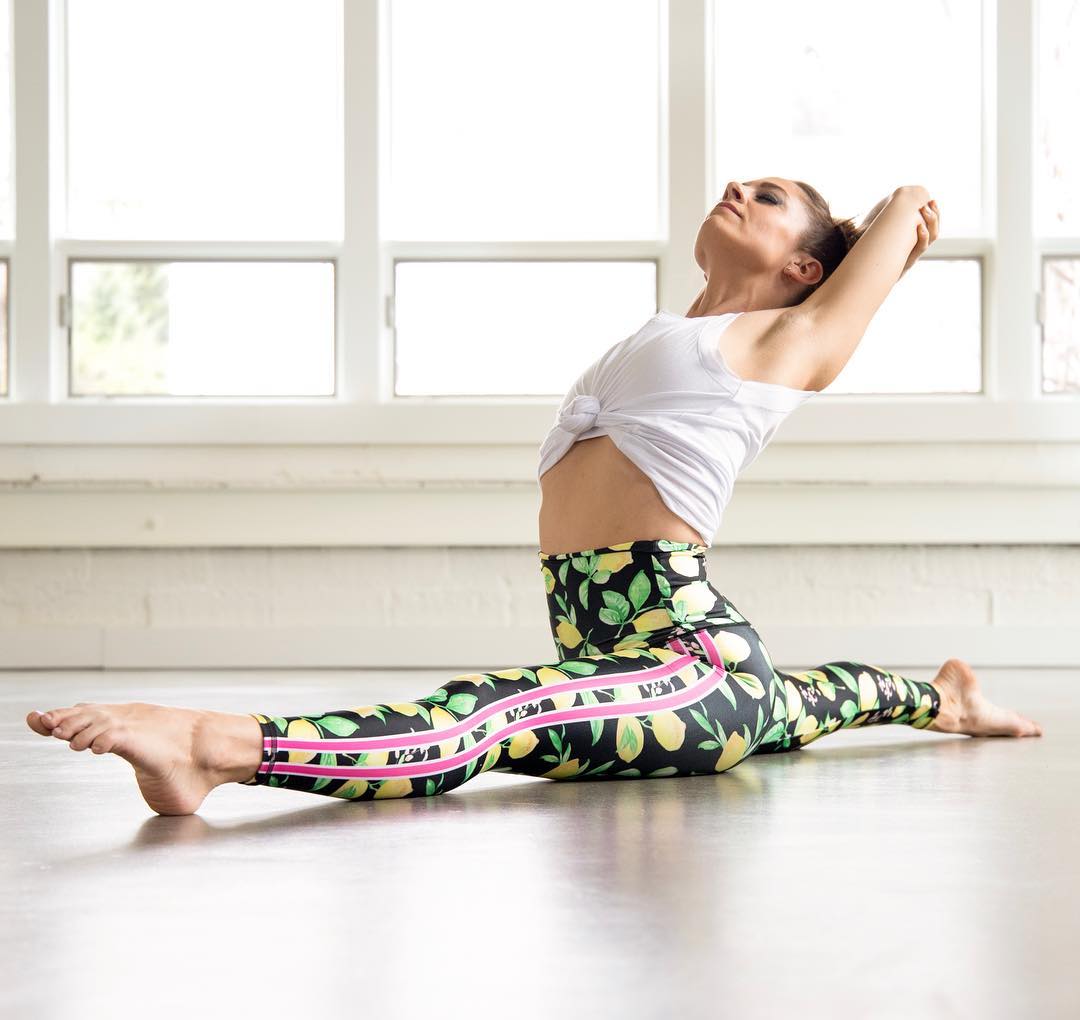
Sanskrit Name: Hanumanasana (हनुमानासन)
English Name: Monkey Pose, Splits Pose Yoga
Type of Yoga: Seated VinyasaYoga
Level of Yoga: Intermediate
Duration: As per your capability or 30 to 60 seconds
Target Area: Groin, Thighs, Hamstrings
Strengthens: Hips, Abdomen, Legs
Hanumana was the ultimate devotee of Lord Rama and was very powerful and strong. Hanuman had the determination with devotion, humility and physical strength. Thus, all these powers are generated from the practice of Hanumanasana (Monkey Pose).
Hanumanasana is named after the Hindu deity Hanuman who is believed to be an avatar of monkey. It is an intermediate-level yoga pose in which the body is folded in the form of Bajrangbali. The initial posture of this asana is a bit challenging as the body also has to be flexible. This asana is performed by sitting comfortably on the ground, and continuous breathing and exhalation is also practiced. This asana proves to be extremely beneficial especially for women.
In this article below, I am going to explain the ways and means of doing Hanumanasana. Also, I am going to mention what caution you should take while practicing the Hanumanasana or the (Monkey Pose).
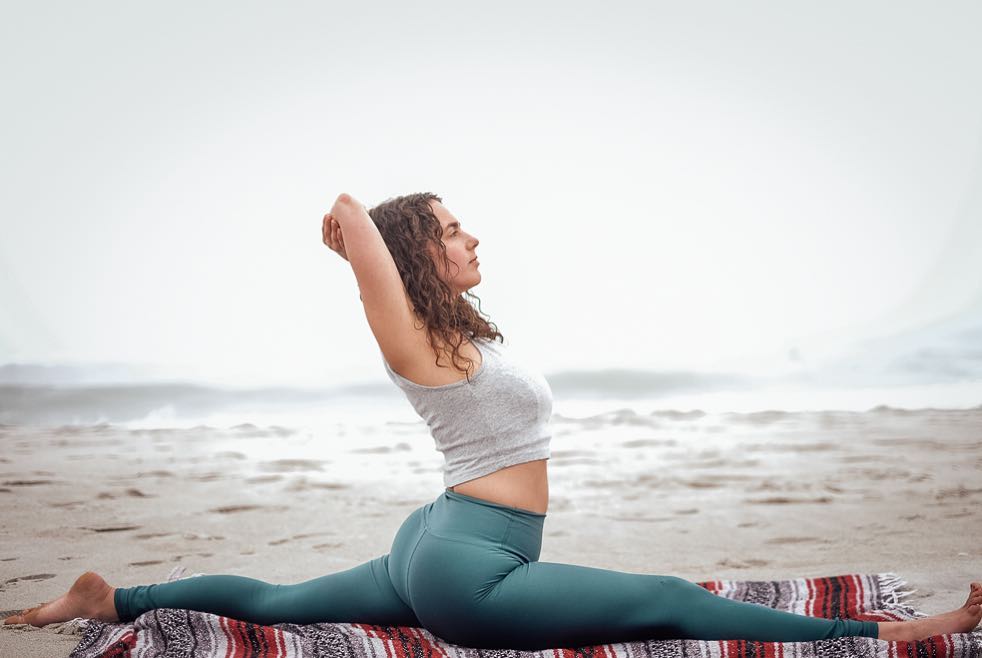
Table of Contents
What Does It Mean By Hanumanasana (Monkey Pose)?
The word Hanumanasana came from two Sanskrit language words. Hanumanasana is named after the Hindu god Hanuman, who is considered to be the incarnation of monkey.
The first word is “Hanuman”, which means “monkey” and
The second word is “Asana”, which means “Yoga Pose”
This posture in English is thus called “Monkey Pose” and “Splits Pose Yoga”. It is an intermediate level yoga posture that turns the body into the currency of Bajrangbali (Hanuman Ji).
NOTE:
Hanumanasana (Monkey Pose) is named after the Hindu god Shri Hanuman Ji or Bajrangbali, who is considered to be the incarnation of monkey.
Preparatory Poses of Hanumanasana
- Janusirsasana (जानु शीर्षासन) or Head-to-Knee Pose
- Padahastasana (पादहस्तासन) or Standing Forward Bend
- Paschimottanasana (पश्चिमोत्तानासन) or Seated Forward Bend or Intense Dorsal Stretch
- Baddha Konasana (बद्ध कोणासन) or Butterfly Pose, Cobbler’s Pose, Bound Angle Pose, or Throne Pose
- Supta Virasana (सुप्त वीरासन) or Reclined Hero Pose
- Virasana (वीरासन) or Hero Pose
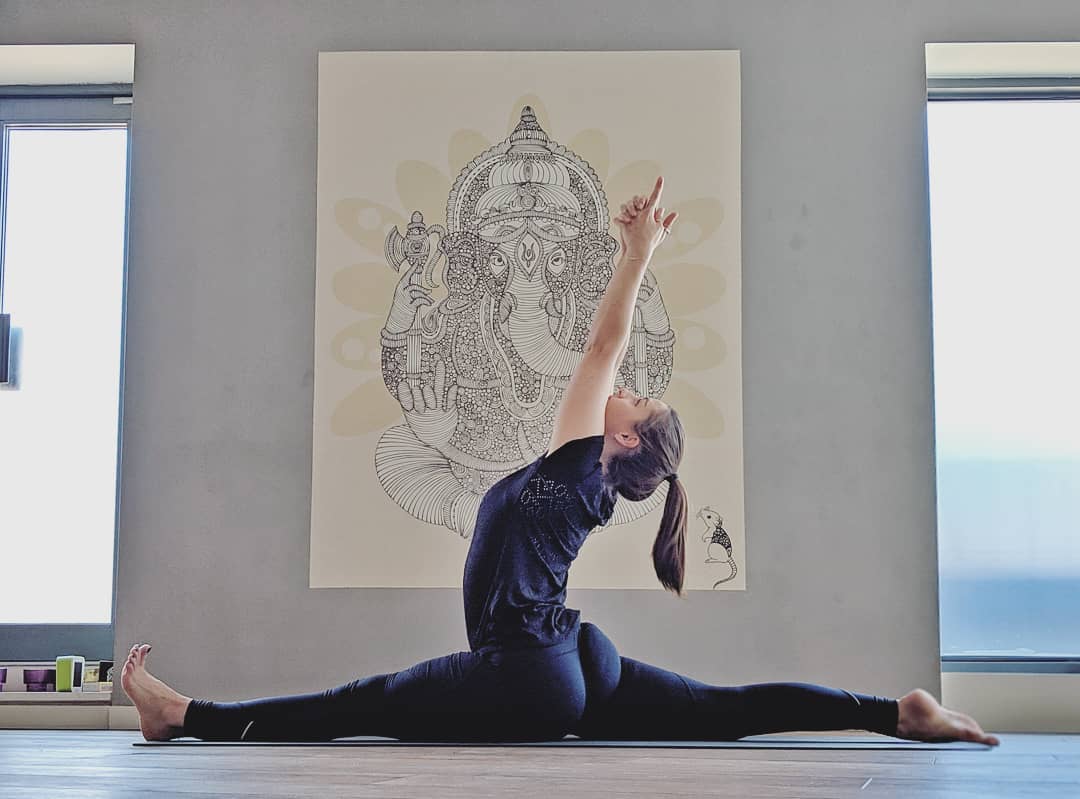
Method Of Doing Hanumanasana (Monkey Pose):
At first, sit on your knees on the yoga mat
In the beginning, put the blanket or soft cloth on the mat
Keep this in mind that your knees make a distance from each other at a distance of about 30 centimeters
Take your right knee forward and move it
And keep the heel of your right foot on the ground touching it
Inhale, now take out your breathing gradually and gradually push your fingers of your hands to balance the body
While doing this action, take your knee back and move your left knee in your back and keep balance
To reach the end of this posture, further increase your right foot
This is the situation where you have to work with patience by waking your self-control
While continuing to practice, try to stretch your left leg back as straight as possible
At this stage, your right heel should be attached to the ground and your right foot’s toes should be facing the sky
On the other hand, your left knee and left foot should be attached to the ground and left heel should be facing the sky
When both of your legs are straight then lift your both hands up and make the posture of Prayer (Namaskara) and bend your upper body to your back as much as possible (Do not create force)
Let your breathing go on normally, and try to stay in this seat for 30 to 60 seconds
With continuous practice, you can increase your time duration
To leave the Asana, keep both of your hands on the ground and bring the feet back to normal and return to normal condition
Repeat all the process with your other leg
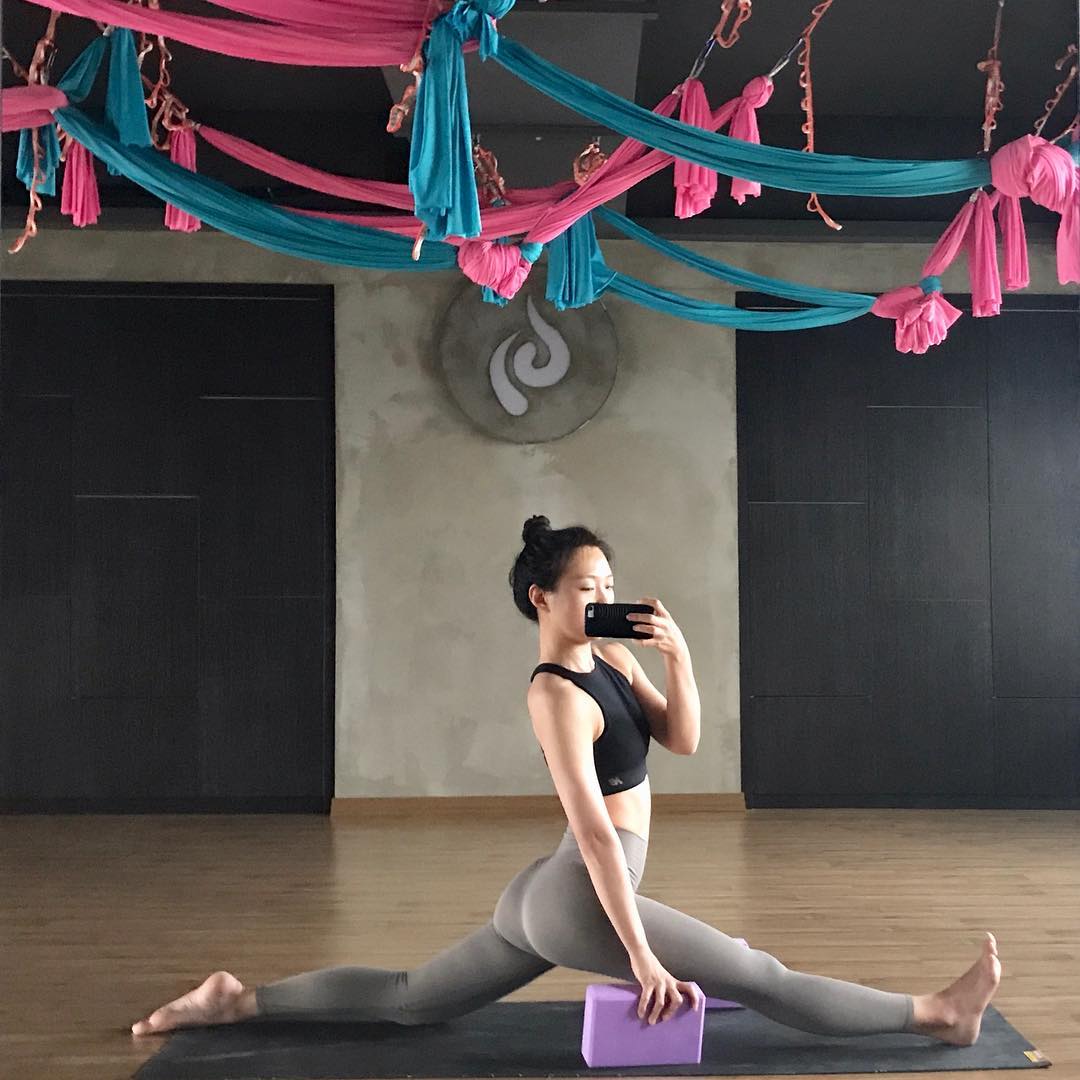
Beginner’s Tips:
In this posture, you can keep your hands in the prayer stage in front of the chest. Just do the whole process in a similar way and keep both of your hands in front.
To perform Hanumanasana, it’s advisable to do so on an empty stomach. Ensure there is a time lapse of 8 to 10 hours between your last meal and engaging in the practice of Hanumanasana.
Follow-up Poses Of Monkey Pose
- Paschimottanasana (पश्चिमोत्तानासन) or Seated Forward Bend or Intense Dorsal Stretch
- Upavistha Konasana (उपविष्ट कोणासन) or Wide-Angle Seated Forward Bend
- Eka Pada Rajakapotasana (एक पाद राज कपोतासन) or One-legged king pigeon pose
- Natarajasana (नटराजासन) or Lord of the Dance Pose
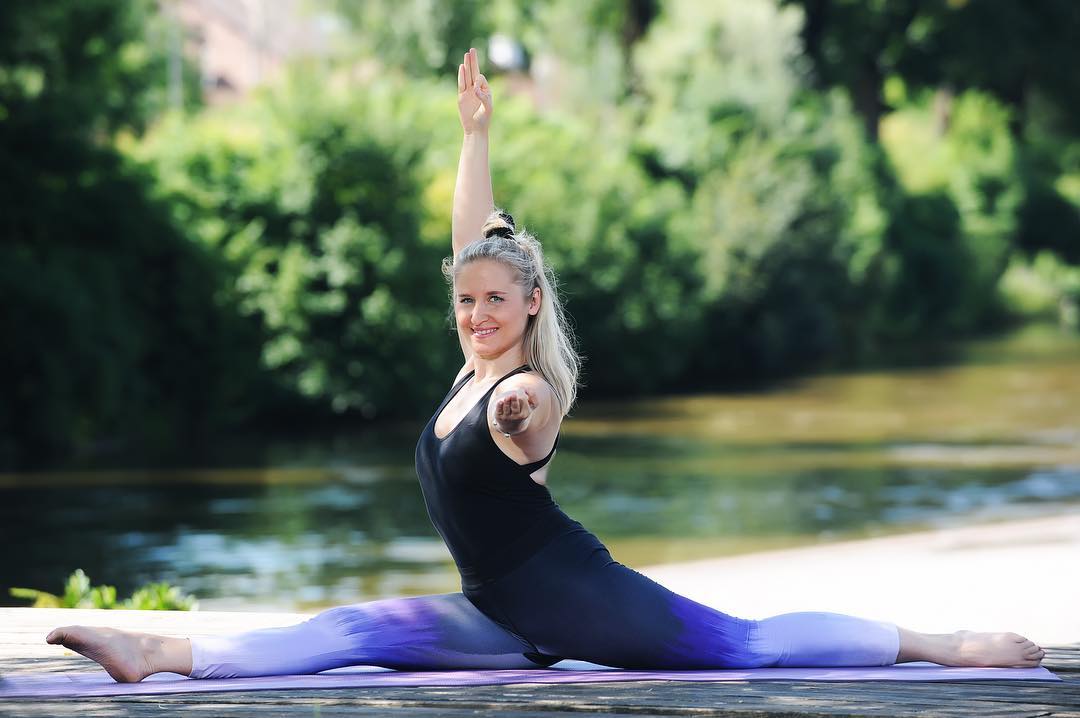
Precautions to Take While Doing Hanumanasana:
- If there is an injury in the body, avoid doing Hanumanasana otherwise the problem of the spine can increase
- People with problems of slip discs, cystic, hernia, etc. do not do this posture
- If there is a pain in the legs or joints then do not practice Monkey Pose
- If you feel pain in your feet while doing this posture then do not stretch the legs further
- Do this by practicing it under the supervision of a yoga teacher
- If there is any problem, definitely seek help from the Yoga Trainer
NOTE:
Hanumanasana is not an easy pose to try. So, seek advice from the doctor or yoga experts as it can cause harm to your body because of doing this asana inappropriately.
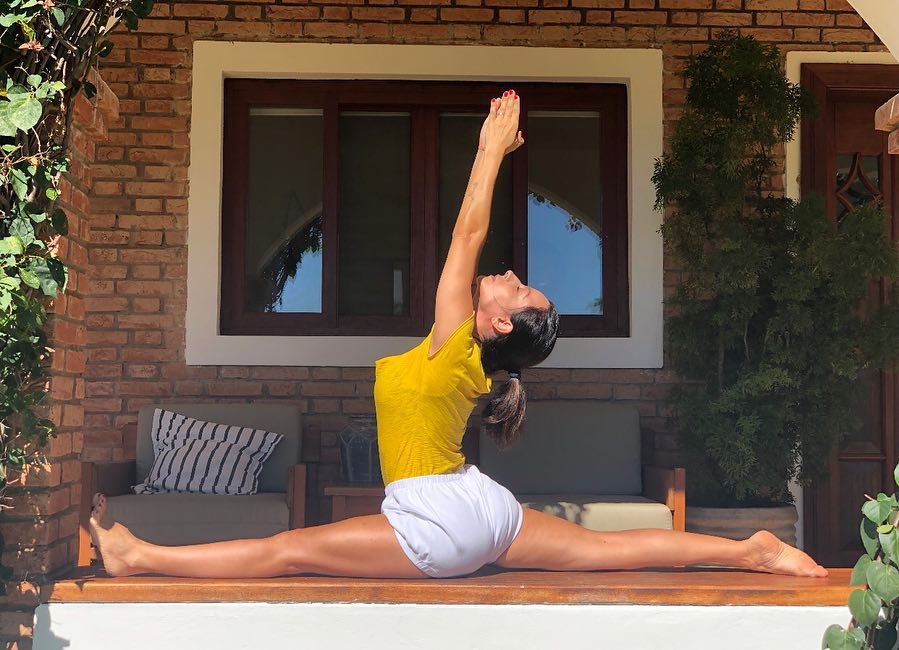
Benefits of Doing Hanumanasana:
- Regular practice of Hanumanasana provides relief from sciatic pain
- This asana enhances spiritual power in the body, and also removes semen defects and strengthens semen.
- This seat makes the legs and buttocks flexible and enhances blood circulation in them.
- Harmful substances inside the body are released after practicing Hanumanasana on a daily basis
- This posture influences the reproductive organs of the body, so this posture is beneficial for all the diseases of the reproductive system
- By doing this asana, the muscles of hands and feet also become powerful
- Plays a special role in keeping the mind constant
- Its continuous practice strengthens the thighs, feet, waist, hips, and makes it flexible
- This posture enhances blood flow throughout the body
- It massages the stomach’s organs and gives strength to the reproductive system.
- Hanumanasana is beneficial in the problems of appetite, dementia, digestive problems and stomach problems
- When we constantly practice this posture, the lower part of our navel becomes flexible
- Its practice enhances stability and develops physical and mental powers
- By doing this asana regularly, our waist become thinner day by day and the muscles become stronger
- Hanumanasana is very beneficial Insomnia patients
- This posture prepares pregnant women for delivery
- Reduces labor pains during childbirth and facilitates the process of giving birth to the child
SUMMARY:
Especially for women, this posture proves to be very beneficial as the regular practice of this posture removes all diseases of women such as menstrual pain and increases infertility.

